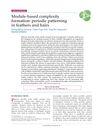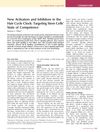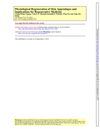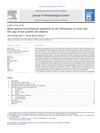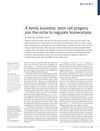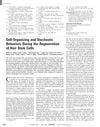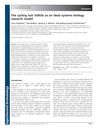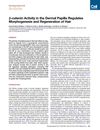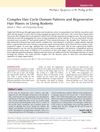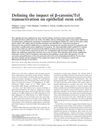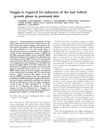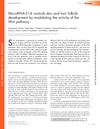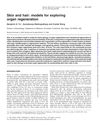Macroenvironmental Regulation of Hair Cycling and Collective Regenerative Behavior
January 2014
in “
Cold Spring Harbor Perspectives in Medicine
”
hair follicle HF stem cell hair regeneration dermis adipocytes hormones BMP signaling WNT signaling cutaneous adipose tissue systemic hormones telogen quiescent state activated state cellular automata model stem cell hair growth skin fat cells BMP pathway WNT pathway skin fat body hormones resting phase inactive state active state simulation model
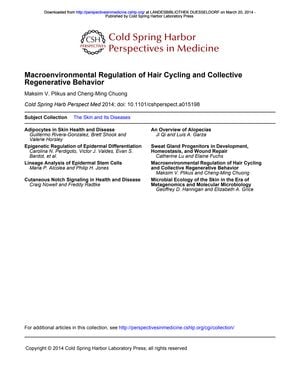
TLDR Hair growth is influenced by various body and external factors, and neighboring hairs communicate to synchronize regeneration.
The document from 2014 explores how hair follicle (HF) stem cell behavior during hair regeneration is influenced by macroenvironmental factors such as the dermis, adipocytes, neighboring HFs, hormones, and external stimuli. It identifies a refractory and competent phase in the hair cycle, with HF stem cells being unresponsive in early telogen and responsive in late telogen, regulated by BMP and WNT signaling pathways. The study also discusses the role of cutaneous adipose tissue and systemic hormones in modulating hair growth, and how HF stem cells integrate multiple signals for transitioning between quiescent and activated states. A cellular automata model was used to simulate hair regeneration patterns, showing the importance of coupling signals between neighboring HFs for robust hair regeneration. The findings suggest that the HF stem cell niche is responsive to a complex network of signaling inputs, which is crucial for synchronizing regeneration among stem cells and adapting to physiological conditions. The principles outlined may be applicable to other biological systems with pattern-forming behaviors.
